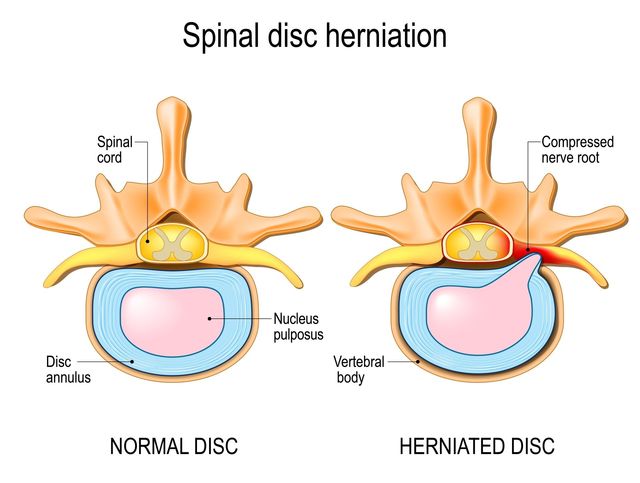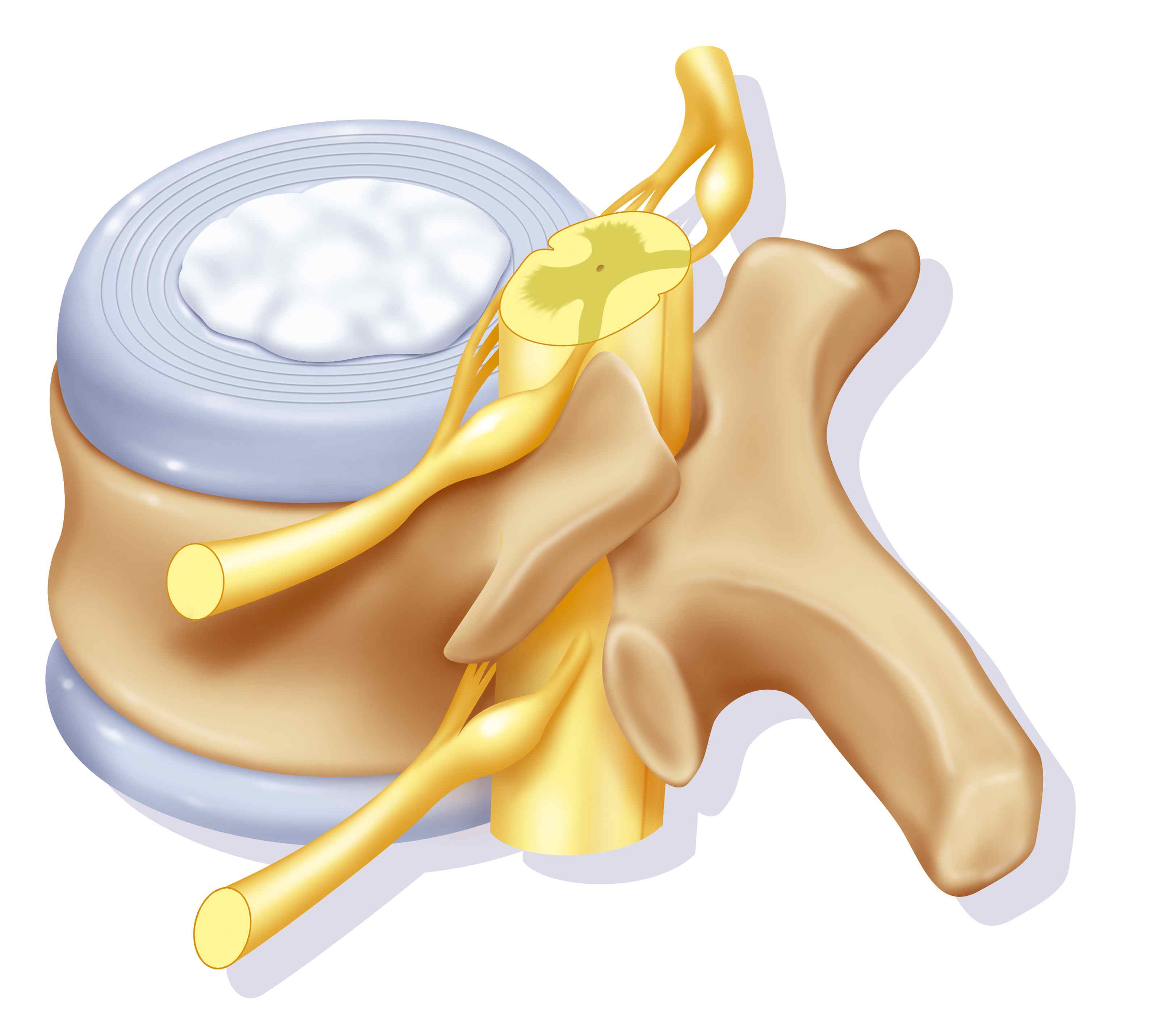The intervertebral disc is a cushion of fibrocartilage and the main ligamentous stabilizing structure between two vertebrae in the spinal column. There are 23 discs in the human spine: 6 in the neck, 12 in the chest, and 5 in the lower back.
These discs provide a shock-absorbing effect within the spine and prevent the vertebrae from moving aberrantly. They consist of three major components: the inner nucleus pulposus, the outer annulus fibrosus, and the cartilaginous endplates that anchor the discs to the bone.
The nucleus pulposus is a gel-like structure that sits at the center of the disc and accounts for much of the flexibility of the spine. It is made of ~75% of water and the remainder are proteins. The tougher outer annulus fibrosis provides structure and constraint, and is well innervated. Tears in this portion of the disc can result in marked pain and dysfunction, with resultant herniation of the nucleus pulposus. Injuries to the intervertebral disc are common, and can result in pain and compression of the adjacent nerves, resulting in radiating symptoms, numbness or tingling, and even weakness.
Evaluation of the discs is best made with magnetic resonance imaging (MRI). Like most other ligaments in the body, injury to the intervertebral discs can be permanent.
At Progressive Spine and Orthopaedics, our doctors are expertly trained to recognize injuries and pathology of the intervertebral disc, and can appropriately treat the symptoms with non-surgical and surgical means if necessary!


